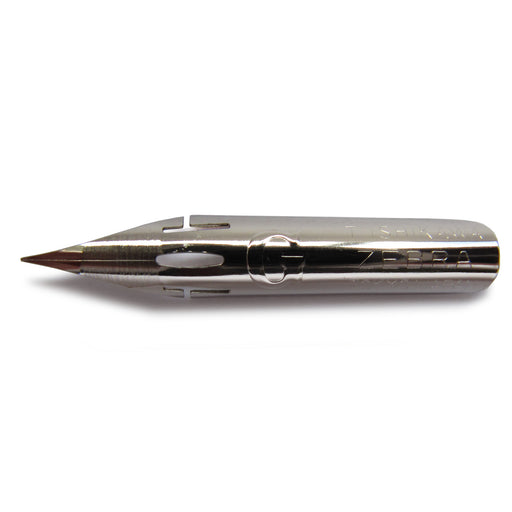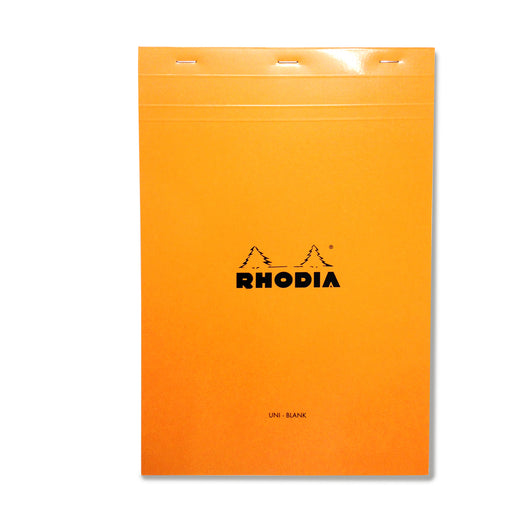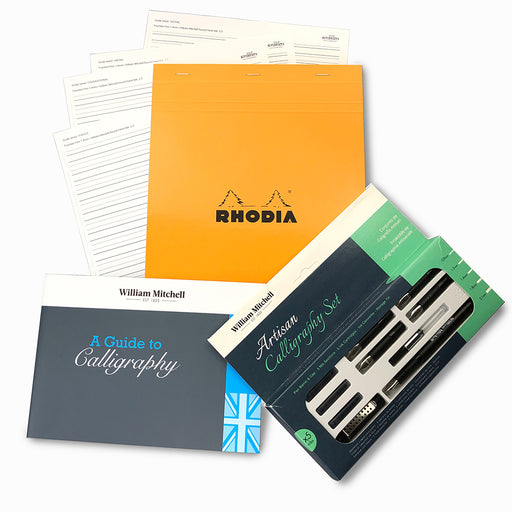New To Calligraphy?
If you're new to calligraphy, choosing the right equipment and materials can feel daunting. We have prepared a concise guide to assist you in taking your first steps.
If you're new to calligraphy, choosing the right equipment and materials can feel daunting. We have prepared a concise guide to assist you in taking your first steps.
First of all, which type of pen?
There are basically two choices, either a fountain pen or a dip pen. And of course there are benefits and disadvantages to both.
Fountain Pens
A Fountain Pen is the easiest to use. It either uses ink cartridges or a converter to fill the pen using a bottle of ink. They are typically used for learning the basics of calligraphy and for writing in greetings cards etc.
Disadvantages of the Fountain Pens are; they are not so flexible - you can only use a limited range of coloured inks, they are harder to clean and can be expensive.
Dip Pens
A Dip Pen or Nib has many advantages; wide range of nibs to choose from, wide range of uses, much cheaper and easy to clean.
A much wider range of inks can be used with a dip pen. In fact you can use some paints as an ink with dip pens. By mixing Gouache paint to an ink consistency you can write in any colour.
The only real disadvantage of dip pens or nibs are they are harder to use at first and sometimes it can be awkward getting the ink to flow.
There are a wide range of nibs available. They fall in to two categories; edged nibs and pointed nibs. The style of lettering you want to learn will determine the type of nib to use.
Edged Nibs
Edged nibs have a straight edge. Typically, the edge varies in width from about 0.5mm wide to 5mm wide. In general, the wider the nib the bigger the writing.
Edged nibs are used for a wide range of lettering styles including Roman Capitals, Foundational Hand, Italics, Gothic and Uncials.
Edged nibs are usually cut straight across, but many nibs are also available cut left-oblique.
Left oblique nibs are cut such that the right-hand edge is higher than the left-hand edge. i.e. the edge slopes down towards the left. They are cut this way to help left-handed people hold the nib at the correct angle.
So, right-handed people want square-cut nibs and left-handed people want left-oblique nibs.
The most popular edged nibs are William Mitchell Round Hand Nibs, Brause Bandzug Nibs and Speedball 'C' Style nibs (some of these are cut right-oblique).
Pointed Nibs
Pointed nibs have a pointed tip rather than a straight edge. In calligraphy a pointed nib is used for Copperplate and Spencerian styles of writing. They are also used for Ornamental Penmanship.
A wide range of pointed nibs are available. The choice of pointed nib is based upon how flexible it is and how thick the point is. The more flexible the nib is the thicker the line can be produced when pressure is applied. The thickness of the point will determine the width of the line without any pressure applied.
You can filter by flexibility, nib type (pointed or broad-edge) and handedness on our Nibs & Dip pen pages.

The Japanese Nikko G nib is hand-cut and very smooth. This responsive nib has a medium flexibility. A favourite nib for Modern Calligraphy and for ...
View full details
The construction of the Brause 361 makes it very flexible and smooth gliding. Only a medium pressure required to produce bold swells making it a fa...
View full details
The Gillott 303 nib is probably the most commonly used nib for Copperplate. It is sharply pointed and flexible. Produces elegant hairlines. Suitabl...
View full details
This is a new nib from Leonardt and is closely based on the old Principality No.1 nib, which is now very rare. The Leonardt EF Principal produces e...
View full details Sold out
Sold out
The Japanese Zebra G nib is like the Nikko G nib, but more flexible. A very popular nib for Modern Calligraphy and suitable for Copperplate an Spe...
View full detailsPen holders can be made from a range of materials; plastic, wood and metal. Some pen holders are all plastic, for example William Mitchell School Pen holder and the Speedball Pen holder, others are made from just wood, such as the Brause 1616 Pen holder.
The majority of pen holders though are made from plastic/wood with a metal 'gripper' that holds the nib.
The most popular pen holders are the William Mitchell Multi-Purpose pen holder and the Standard Round pen holder. Both of them will hold the vast majority of nibs.
 Sold out
Sold out
The Standard Pen Holder has a ‘universal’ ferrule and is made from wood. It can be used with many different types of nibs including most Brause, Gi...
View full details
The Standard Pen Holder has a ‘universal’ ferrule and is made from wood. It can be used with many different types of nibs including most Brause, Gi...
View full details
The Standard Pen Holder has a ‘universal’ ferrule and is made from wood. It can be used with many different types of nibs including most Brause, Gi...
View full details
The Standard Pen Holder has a ‘universal’ ferrule and is made from wood. It can be used with many different types of nibs including most Brause, Gi...
View full details
The Standard Pen Holder has a ‘universal’ ferrule and is made from wood. It can be used with many different types of nibs including most Brause, Gi...
View full detailsThere are many Calligraphy Inks available, but not all of them are ideal for lettering. The majority of inks produce a very dense black, which is what most calligraphers want. But some inks can be watery or thick whilst other are too sticky.
There are two types of bottled ink; waterproof and non-waterproof ink.
Waterproof Inks
Waterproof ink contains shellac, which is what makes it waterproof. Writing with waterproof ink is difficult as the ink can clog up the nib. Therefore it is usually best for calligraphers to avoid waterproof ink.
Non-Waterproof Inks
Fountain pen inks are not usually suitable for calligraphers. This is because they can be a bit watery so they can work with fountain pens without clogging the mechanism. That said, it is worth worth mentioning Rousy Calligraphy Inks which are popular because they flow very well and produce opaque lines.
Even though calligraphy inks are purposely designed for dip pens some are still quite watery, sticky, thick or do not flow very well from a dip pen.
Sometimes thick or sticky ink can be diluted to help it flow. But you must be very careful and not over do this - only add a few drops at a time so the ink does not become watery.
 Sold out
Sold out
A favourite among calligraphers, Higgins Eternal is a smooth-flowing, non-waterproof, carbon-based ink ideal for both Traditional and Modern Callig...
View full details
Brian Walker is an experienced penman of many years standing. Originally he made Walker's Copperplate Ink for own his personal use in Spencerian Sc...
View full details

Traditional Black Sumi Ink. Produces Produces good hairlines and dense black lines. Works well with Modern Calligraphy nibs Hunt 101, Brause Rose N...
View full details

We have been making Iron Gall Ink for 10 years. And all our knowledge and experience has gone in to developing this new iron gall ink. We sent vari...
View full details
Dense, opaque watercolour, gives good coverage. Can be thinned with water. When diluted, will produce fine hairlines for Copperplate and Spencerian...
View full detailsThe range of papers suitable for calligraphy is not as great as it may first seem. This is because calligraphers require a smooth paper with a tooth or edge so that the letters are sharp. In comparison, water colour artists do not need a smooth surfaced paper and therefore have a much wider choice of papers available.
When starting calligraphy you are going to use a lot of paper, so you want to select the cheapest that is suitable to use. Some photocopier papers are suitable, but many of them will make the ink bleed in to the paper. Also, the most readily available size of photocopier paper is A4, which can be too small for calligraphy writing.
Layout paper is ideal for practising. It is slightly transparent enabling you to see the paper underneath. This means you could have a guideline sheet underneath to save the hassle of ruling-up every practise sheet. Rhodia Pads are a popular choice.
You could draw your guidelines in a fine black pen. You can see the lines more easily underneath the paper and can save you time. Layout paper is also a good writing surface giving crisp letters.
As always, do experiment as the paper quality varies.

Very smooth paper, making it perfect for Modern Calligraphy and Copperplate. Each page is micro perforated for easy and clean removal. The orang...
View full details Sold out
Sold out
Triomphe is PH neutral and acid free. It is an exceptionally smooth stationery paper making it perfect for Copperplate and Modern Calligraphy. O...
View full details

Very smooth paper, making it perfect for Modern Calligraphy and Copperplate. Each page is micro perforated for easy and clean removal. The orang...
View full details

Very smooth paper, making it perfect for Modern Calligraphy and Copperplate. Each page is micro perforated for easy and clean removal. The orang...
View full details

Quality, smooth surfaced black card. Suitable for all styles of calligraphy. The 350gsm card is ideal for a range of calligraphy projects includin...
View full detailsWe've hand-crafted a selection of Calligraphy Sets that include everything you need.

This set contains everything you need to get started with Traditional Calligraphy: Set of 10 William Mitchell Round Hand Square Cut Nibs, Reservoir...
View full details
This selection contains an Ornamental Oblique Pen holder, 7 nibs and a nib tin: Ornamental Oblique Pen Holder Brause 361 and Rose nibs Leo...
View full details Sold out
Sold out
This set contains all the Tools and Equipment you need for Copperplate:Clairefontaine Triomphe PadRousy Iron Gall InkPlastic Oblique Holder with Me...
View full details
This selection contains 2 pen holders, 6 nibs and a nib tin: Cork Tip Pen Holder Speedball Pen Holder Brause 361 nib Leonardt EF Principal and Crow...
View full details

This set contains everything you need to get started with Traditional Calligraphy: Artisan Calligraphy Fountain Pen Set*. Rhodia Plain Pad (A4). Wi...
View full detailsDesigned and created to provide instruction, resources, and inspiration for the new and progressing calligrapher.

Select from 3 distinct subscriptions based on your preferred Calligraphy style and gain entry to comprehensive courses crafted by experienced calligraphers.